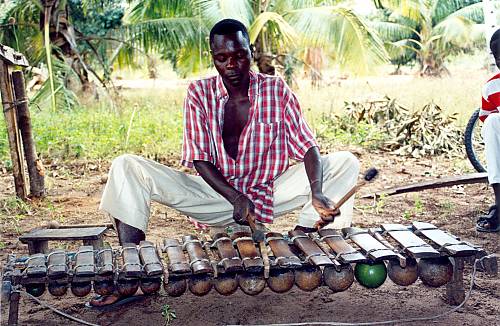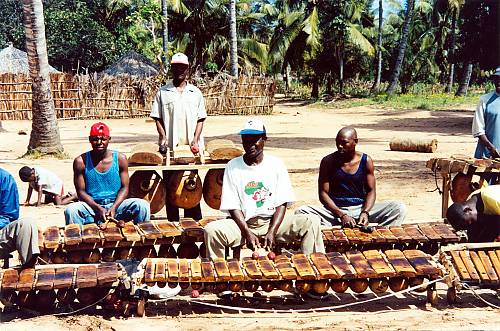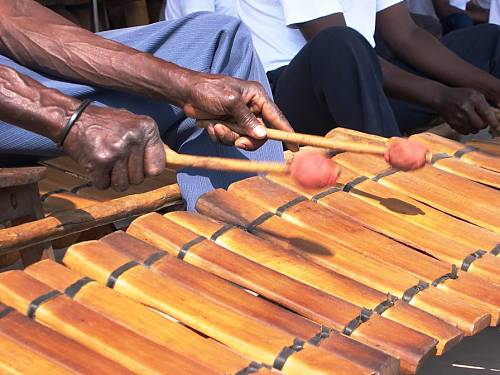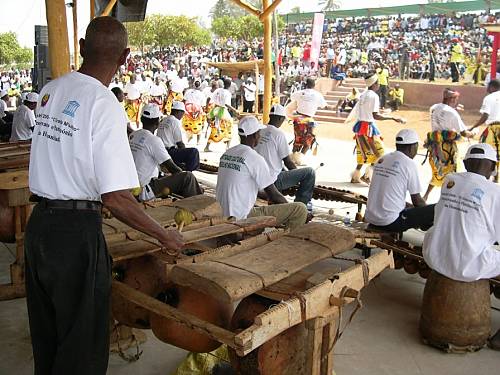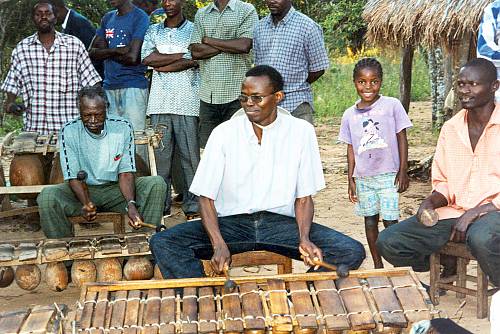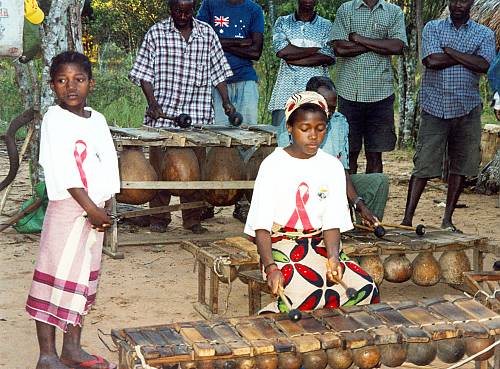Chopi Timbila
Inscribed in 2008 (3.COM) on the Representative List of the Intangible Cultural Heritage of Humanity (originally proclaimed in 2005)
The Chopi communities live mainly in the southern part of Inhambane province in southern Mozambique and are famous for their orchestra music. Their orchestras consist of five to thirty wooden xylophones, called timbila, of varying sizes and ranges of pitch. The timbila are finely manufactured and tuned wooden instruments made from the highly resonant wood of the slow-growing mwenje (sneezewort) tree. Under each wooden slat, a resonator made out of calabashes is fastened, tightly sealed with beeswax, and tempered with the oil of the nkuso fruit, giving the timbila their rich nasal sound and characteristic vibrations. The orchestras are composed of timbila masters and apprentices of all age groups, with children playing next to their grandfathers.
Each year, several new pieces are composed and performed at weddings and other community events. The rhythms within each theme are complex, so that the player’s left hand is often executing a different rhythm from that of the right hand. Lasting about one hour, performances feature solo and orchestra themes, using varying tempi. Closely connected with the music are particular timbila dances that are performed by two to twelve dancers in front of the orchestra. Each timbila performance includes the solemn m’zeno song, performed by dancers, while musicians play softly and slowly. These texts, full of humour and sarcasm, reflect contemporary social issues and serve to chronicle community events.
Most experienced timbila performers are old. Although several timbila masters have started to train young musicians and have also included girls in their orchestras and dance groups, young people are increasingly losing contact with this cultural heritage. In addition, deforestation has led to the scarcity of the wood needed to produce the particular sonority of the timbila instruments.

